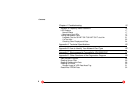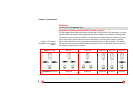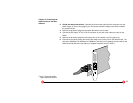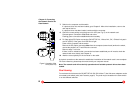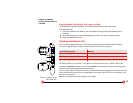
Chapter 1. Fundamentals
7
For all SK-NET GE types:
64-bit/66 MHz PCI Bus Interface
Although designed as a 64-bit/66 MHz PCI bus interface, the Gigabit Ethernet Server Adapter can
also be operated in 32-bit systems or at a clock frequency of 33 MHz. The cards operate as true Plug
& Play adapters and automatically adjust to the different configuration options on the PCI bus.
The high-speed 64-bit/66 MHz PCI bus is now state-of-the-art in high-end server systems. The
theoretical bandwidth is four times greater than in conventional 32-bit/33 MHz systems.
SysKonnect’s Gigabit Ethernet Server Adapters support this 64-bit/66 MHz PCI architecture, which
means that the server network card cannot be a bottleneck on the system bus.
Because of the wider data paths and the higher clock frequency, the Gigabit Ethernet Server
Adapters reduces the bus and CPU utilization. For application and database servers in particular,
this results in better application performance.
Reduced Load on the CPU
• Support for Burst Data Transfer
The PCI bus supports burst-mode data transfer, i.e. the continuous transmission of data blocks.
This reduces the overhead for data transmission and is closely linked to the optimization of cache
memory and the use of optimized data transfer commands between memory and the bus. The
Gigabit Ethernet Server Adapter is therefore capable of using the maximum burst speed
supported by the system.
• Dynamic Interrupt Moderation (PacedPacketBatch)
Every time a data packet arrives via the network and is forwarded via the PCI bus, an interrupt is
triggered in the host CPU. Each interrupt causes the system to halt its current processes and
locate the origin of the interrupt. As a result, the system may branch to service routines, buffer the
current register values and status and write these values back once the routine has terminated.
If the network is running at gigabit speeds and small packets are being transferred, there may in
extreme cases be more than 100,000 interrupts per second. To reduce the load on the CPU, the







